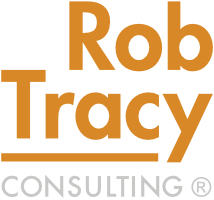It seems strange now, but in 2019 the most pressing challenge for many manufacturers was talent management and the availability of qualified workers. Companies employed many strategies to hire and retain workers, including pay increases, referral bonuses, internal training programs, flexible schedules, relaxed hiring standards, and engagement with local high schools and vo-techs. We also saw increased investment in automation and continuous improvement programs to lessen the need for additional workers.
The market was tilted heavily in favor of the employee, until… the pandemic turned everything upside down.
Suddenly, there are millions of people unemployed, and many companies are shedding employees rather than hiring.
Some industries think that the pandemic has created a permanent shift in their marketplace–consider movie theaters, office workspace real estate, professional sports, and the convention business among others. These businesses may never see a return to “normal” as it existed in 2019.
So is the current shift in the labor market structural and permanent or is it transient? I believe that it’s transient. The economy has taken quite a hit, which has reduced the pressure to hire and retain workers, but the underlying factors that were driving the worker shortage pre-Covid-19 still exist. There are still too few people pursuing careers in manufacturing, and when the economy recovers we will be back in the fight to keep our factories fully staffed.
With hiring pressure lowered (for most industries) and talent more available, it may be natural to relax a bit when it comes to your talent strategy, but this lull is an excellent time to think, strategize and prepare for the eventual return of the talent shortage. Items to consider might include:
Prioritizing sanitary practices
Add “Sanitize” as a permanent fixture to your 5S program. Employees are going to be justifiably attuned to the efforts that companies take to keep the environment free of diseases.
Prepping for permanent change
Determine how social distancing may be implemented over a longer period of time, perhaps permanently. This may involve staggered shifts and break times, sneeze barriers, factory and office layout changes, and revised policies about allowing workers to be on site when they are not feeling well.
Reflecting on your talent management strategy
This is an opportune time to bolster elements of your approach to hiring, on-boarding, and retaining talent so that you’re ready when workforce conditions tighten again. I wrote a series of blog articles last year about talent management that will help, find them listed below:
Talent System Series, Part One: Solving Talent Systems Problems for Successful Factories
Talent System Series, Part Two: Assessing Your Talent Brand Status
Talent System Series, Part Three: Your Talent Pipeline Strategy
Talent System Series, Part Four: Make Your Screening & Hiring Process Efficient
Talent System Series, Part Five: An Onboarding Program That Works
Re-evaluating your capital investment plans
Prior to the talent shortage, capital investments were often driven by the need to decrease costs or increase capacity. Now there may be an equally compelling case to automate jobs that will likely be difficult to fill in the coming years. Advances in automation and AI warrant a deeper look, even for those that are skeptical of the latest-and-greatest gizmos.
Transferring knowledge
Structure and elevate the transfer of knowledge from those that will be retiring in the next five years. Even though some people may put off their retirement due to the economic impact of the pandemic, the long-term flow of retirees will continue. Capitalize on this temporary reprieve of workforce pressures by taking the time to pass along the knowledge from your more senior members. One idea is to identify your highest risk areas and lay out a specific plan to address it. For example, you may have a product or a machine that “only Joe knows how to run.” Use this time to pair someone up with Joe (with social distancing in mind) and let them practice doing what Joe does under his watchful eye.
We’re still in the middle of this mess, and chances are we won’t see a rapid bounce back anytime soon. We need to play the hand we’re dealt, and one of the ways to play that hand is to prepare for the eventual recovery. By proactively addressing the talent shortage that is likely to reappear, you can prepare yourself for the growth that you’ll eventually experience.
If you’d like to discuss this further, please reach out to me:
Phone: 651-398-9280
Email: rob@robtracy.net
Contact page: https://www.robtracy.net/contact/
